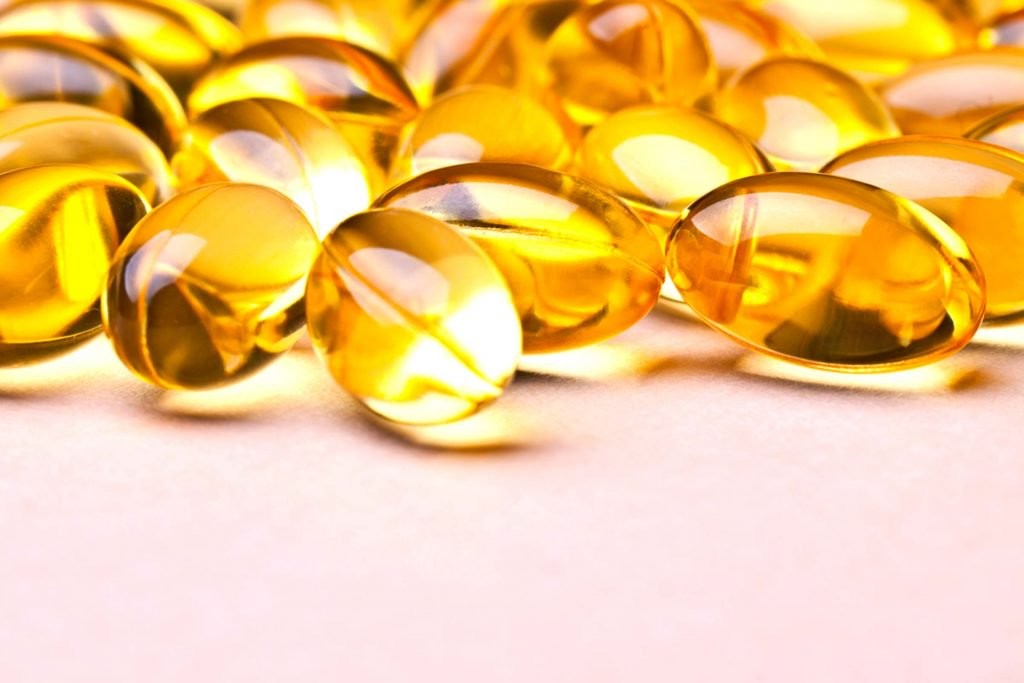Visit vitamin D is one of the vitamins the most important. Concentrate hard, and don't miss a moment of this chapter from Blooness power supplyIt is absolutely central to a healthy, blue diet.
What is vitamin D?
As we saw in the general chapter on vitaminsvitamin D is one of the fat-soluble vitamins. In other words, it is a vitamin that is stored in the fats and in our body's liver, to be released according to the body's needs.
However, unlike the other vitamins in this group (vitamins A, E and K), vitamin D is not supplied by dietary lipids ! Its main source is the sun.

Vitamin D is broken down into two forms:
- vitamin D2 (or ergocalciferol): produced by plants.
- vitamin D3 (or cholecalciferol): mainly of animal origin, rarely of plant origin, or else synthesized in the skin under the effect of ultraviolet rays.
Most vitamin D is therefore synthesized by the body after exposure to the sun's ultraviolet rays. This is how it works, 15 minutes of exposure 3 times a week (face, forearms and hands) is enough to provide the body with 80% of the vitamin D it needs..
This content is part of the guide Blooness, the guide to the ideal human diet, the summary of which you can find here 🌱🥑
That's all it takes to take full advantage of the benefits of this incredible vitamin, so there's no need to over-expose yourself and risk the health problems associated with over-exposure.
The benefits and virtues of vitamin D
Vitamin D is linked to numerous bodily functions.
French-speaking subscribers will receive the newsletter in French, and all others will receive an English version.
Benefits for bone health
It is involved in the mounting calcium and phosphorus through the intestines, and in calcium reabsorption by the kidneys. It is also involved in bone mineralization of the skeleton and jointsand on the muscle tone.

As a result, so it's essential to our bone health and thus prevent fractures and osteoporosis.
Benefits for maintaining the immune system
On the other hand, vitamin D influences more than 200 genes, is believed to have a DNA repair action, and may have a beneficial effect on several diseases such as diabetes, certain cancers and epilepsy.

As far as the immune system is concerned, T lymphocytes are responsible for killing bacteria and viruses, must first find circulating vitamin Dto a receptor in order to initiate their defense process. This applies to influenza, ENT infections, etc.tuberculosis and wounds and scars to treat.
For example, you will notice that influenza occurs mainly in the winter monthswhen vitamin D levels are at their lowest, after their stock built up during the summer months has run out.
Focus on Vitamin D and cancer
We observe significantly fewer colorectal cancers in developing countries on every continent. In fact, several studies report that vitamin D administration to rodents inhibits colorectal carcinogenesis voluntarily induced by the tests.

Several observational studies suggest that a significant reduction in certain cancers, including breast cancer, when vitamin D is supplemented. The risk would be reduced by 50 % with a supplement of 4,000 IU per day, than with a level of less than 32 nmol/l (i.e. 13 ng/ml).
However, high levels of 25-hydroxyvitamin D may increase the risk of pancreatic cancer.
Vitamin D deficiency
Vitamin D deficiency is associated with a increased risk of viral infections.
Numerous epidemiological studies show an association between vitamin D deficiency and a greater frequency of certain autoimmune diseases: type 1 diabetes, multiple sclerosis (except in white-skinned people), rheumatoid arthritis, scleroderma... However, the causal link remains unproven.
Vitamin D deficiency can cause muscle weakness and pain.
It is also associated with higher risk of breast, digestive tract and prostate cancer.
It is associated with greater risk of cardiovascular disease.
Low vitamin D levels seem to correlate with cognitive impairment in the elderly, and could double the risk of schizophrenia.
Vitamin D deficiency can also lead to mood disorders (anxiety, depression), a disturbance of the body's immune system, and a loss of energy. blood glucose (a good intake of vitamin D can improve insulin sensitivity), hormonal imbalance, and difficulty losing body fat.
In short, vitamin D deficiency is associated with excess all-cause mortality.
People at risk in case of deficiency
As you already know, vitamin D is synthesized by the body under the effects of the sun's UV rays. As a result, there are many situations, many periods, and many people who unknowingly suffer at least part of the year, if not all the time, vitamin D deficiency.
The long-term consequences, coupled with other deficiencies and an otherwise more or less healthy lifestyle, can be dramatic.
Here is a list of people who, because of their personal or medical situation, are particularly prone to vitamin D deficiency:
- the elderlyIn addition, vitamin D synthesis becomes very difficult with age;
- People with dark or black skin, although this claim is challenged by some scientists ;
- people living at altitude in winter, as the UV-B rays responsible for vitamin D synthesis are absorbed by the ozone layer;
- People who are unable to expose themselves due to illness (vitiligo, etc.);
- overweight peoplebecause their body fat traps the vitamin D stored inside, preventing it from circulating in the blood;
- breast-fed children, for whom the mother must supplement with at least 6,400 IU per day (far from the 800 IU per day recommended by public health organizations);
- people with biliary tract obstruction (fat malabsorption);
- people suffering from kidney failure;
- people constantly protected from the sun in general through their habits and behaviors (living indoors, traveling by car, wearing clothing that covers the whole body).
In short, vitamin D is a key vitamin, whether we eat a "standard" Western diet or not, as it helps protect us from many illnesses. The problem is that its supply depends on the sun, so how can I avoid a deficiency?
Foods rich in vitamin D
As we said earlier, the main source of vitamin D is the sun. This is why populations in Northern Hemisphere countries are logically deficient in vitamin D.
In France, for example, 80% of French people today lack vitamin DThis figure rises to 91% in winter.

In the diet, vitamin D is found in :
- cod liver oil;
- fatty fish (salmon, herring, anchovies);
- egg yolk ;
- whole milk, butter, non-skimmed products.
As you may have noticed, these are generally foods rich in lipidsrecommended as part of the Blooness diet, inspired by Low-Carb High-Fat. However, the quantities provided by the diet are very inadequate. That's why only exposure to the sun, or supplementation, will suffice to cover your vitamin D needs.
But how much vitamin D do we actually need?
Official vitamin D requirements
The French National Academy of Medicine recommends a daily intake of 800 to 1000 IU per day up to the age of 50 (i.e. 20μg per day), and more beyond that, i.e. five times more than ANSES.
The intake recommended by the Canadian Ministry of Health is 600 IU/day from age 9 to 70, and 800 IU/day after age 70, based on "minimal sun exposure".
So there are many different voices, and it's difficult for those who want to take control of their health to find their way around. The emerging schools of nutrition, on the other hand, have researched and read in detail the studies that have been carried out on the subject in order to highlight our true needs, which will imperatively involve supplementation.
In any case, only an excess of well over 20,000 IU / day seems to be dangerous for the body. But beware: there's no point in exceeding 10,000 IU/day, otherwise you may experience undesirable effects.
What is the ideal dosage of vitamin D?
Vitamin D is one of the most important vitamins, and one of the most important. that we miss the most in countries with little sunshine, unlike blue zonesThe sun and our lifestyle mean that the body naturally synthesizes this vitamin virtually all year round.
Although the studies cited are essentially observational studies showing a correlation between low blood levels of vitamin D and various events, and that this correlation is not scientifically sufficient to prove that this deficiency is the cause of these events, they nonetheless shed light on a cluster of clues.

As a simple precaution, and intuitively, we can easily conclude that vitamin D supplementationespecially in winter when sun exposure is scarce, can do no harm at worst, and at best prevent us from a number of more or less serious illnesses.
But what about vitamin D supplementation?
If official bodies recommend 800 IU per day, or 20μg per day, can we go beyond these recommendations?
Vitamin D specialists John Cannell and Bruce Hollis estimates that levels should be between 55 and 70 ng/mL at all times. A formula has been developed which requires approximately 75 IU per kg of body weight, i.e. :
75 IU * body weight = recommended vitamin D dosage
For example, a healthy adult weighing 75 kilos, should have about 75 * 75 = 5,625 IU per day. This is a far cry from the official recommendations.
The right dose should be dictated by the biological results, and adjusted accordingly, as each person is different.
In the case of sick people (type 2 diabetes, cancer, etc.), higher doses may be considered. As part of his metabolic cancer treatment, for example, Dr. Schwartz recommends up to 10,000 IU / day. Not to be exceeded, however, especially if you're not following any particular protocol.
Vitamin D converter, by Blooness
If you're confused between IU (International Units) and the μg dosage sometimes found in multivitamins, here's a converter that should help you avoid overdosing on vitamin D, especially when you add vitamin D to a multivitamin that already contains it.
High-dose vitamin D capsules: a false good idea
Some doctors prescribe single doses of high-dose vitamin D capsules. But that's not a good idea. Here's the problem, is that these overdosed capsules do not mimic the effects of daily vitamin D synthesis under the effects of sunlight.
If only as a precaution, or because studies have confirmed that taking high doses of vitamin D is counterproductiveFor example, in temperate climates, it's best to opt for a daily intake of vitamin D during periods when the body has depleted its stock, e.g. from November to March.
Vitamin D drops
Because vitamin D drops can best "match" the needs of each organism, according to the formula mentioned above, this is the way of supplementing that is touted by all the theorists of so-called "emerging" nutrition, and which is a little off the beaten track.
Vitamin D of animal or vegan origin
Vitamin D drops are available in two forms:
- Vitamin D3 from lanolin is perfectly natural, and of animal origin: it is produced from sheep's wool.
- Plant vitamin D3 from lichenThe result is a more costly, labor-intensive process.
Although vitamin D in drops is the most personalized format according to weight, it's not necessarily the most practical. In this case, you can opt for a capsule format, to be taken daily, by choosing a product made in Francebecause this product should comply with French standards, to avoid unpleasant surprises, particularly in the case of capsules that are incorrectly dosed in relation to what is advertised on the label.
For an adult weighing 75kg, vitamin D requirements are around 5,621 IU per day, you can choose this type of product, which provides 2,000 IU per tablet. It will therefore be sufficient to take around 2 tablets to approximate our body's needs.
Please note, certain highly effective multi-vitamins already contain vitamin D, so if you decide to supplement your diet, it's important not to combine products without precisely adding up the doses.
In this examplethis multi-vitamin already contains 5µg Vitamin D3which corresponds to 200IU. It's not a lot, but it's wise to take this into account if you're adding a vitamin D3 supplement, and also to realize that this single multi-vitamin may not be enough for vitamin D3 in particular.
Next chapter in Volume 1 of Nutrition Basics: vitamin E.
Previous chapter in Volume 1 of Nutrition Basics: vitamin A.
Next chapter in Volume 2 of Food lowcarb : How much electrolytes should lowcarb diets contain?
Previous chapter in Tome 2 of the lowcarb diet: Potassium in the ketogenic or LCHF diet
